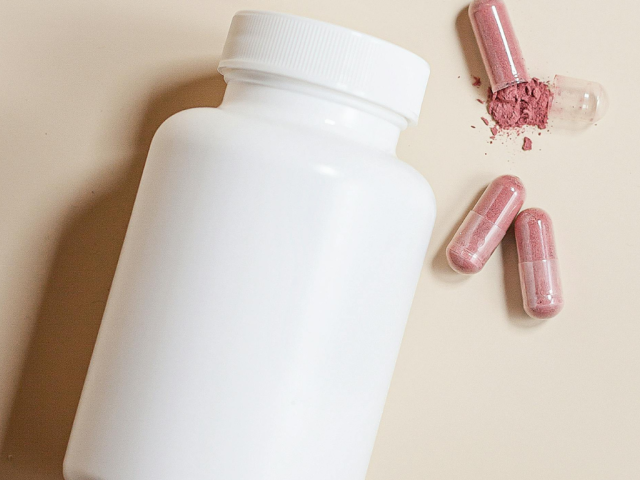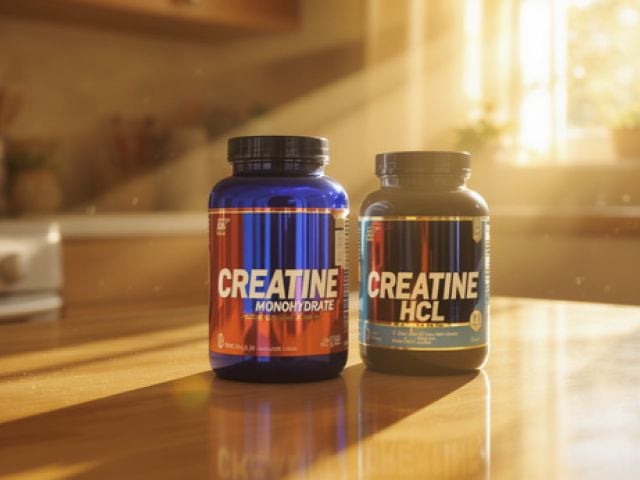
Vitamin C Dosage Guide: How Much and When to Take It
You’ve probably heard countless recommendations about how much vitamin C to take. Some experts suggest the bare minimum while others advocate for megadoses. This confusion leaves many people wondering what’s right for their unique situation.
The truth is that vitamin C requirements vary widely based on your age, lifestyle, and health status. Getting the dosage right matters because too little leaves you vulnerable to deficiency while excessive amounts can cause unwanted side effects.
Key Takeaways
- Most healthy adults need 90 mg daily for men and 75 mg for women, though smokers require an additional 35 mg beyond these baseline amounts.
- Your body absorbs 100% of vitamin C at doses up to 200 mg, but absorption efficiency drops at higher amounts.
- Splitting your daily dose into two servings improves absorption compared to taking large amounts at once.
- The upper safety limit is 2,000 mg daily, above which you may experience digestive discomfort and other side effects.
How Much Vitamin C Do You Need Daily?
The Recommended Dietary Allowance (RDA) provides baseline guidance for preventing deficiency1. Adult men should aim for 90 mg daily while women need 75 mg. These numbers represent the minimum intake to maintain health in the general population.
Certain groups require more than the standard recommended daily intake. Smokers face increased oxidative stress that depletes vitamin C faster than normal. This means they need 125 mg daily for men and 110 mg for women2.
Pregnancy and breastfeeding also increase your vitamin C needs. Pregnant women require 85 mg daily while breastfeeding women need 120 mg. Children’s requirements range from 15 mg for toddlers up to 75 mg for teenage boys.
Does Body Weight Affect Vitamin C Needs?
Research analyzing over 16,000 adults found that body weight plays a role in vitamin C requirements3. Heavier individuals weighing over 100 kg may need around 155 mg daily to reach adequate blood concentrations.
Males generally require 1.2 times more vitamin C than females to achieve the same serum levels. This difference relates to body composition and metabolic factors.
What is the Optimal Vitamin C Intake?
Scientists debate whether current RDA values are sufficient for true health optimization. Dr. Mark Levine’s research at the National Institutes of Health suggests women should receive 90 mg daily rather than the current 75 mg recommendation4.
His team found this higher amount achieves 80% saturation of neutrophils (immune cells) with minimal urinary loss. This represents a more complete approach to meeting your body’s needs.
Population studies indicate the general population should consume approximately 110 mg daily to maintain adequate serum concentrations. This recommendation goes beyond just preventing scurvy and aims for true cellular health optimization.
How Well Does Your Body Absorb Vitamin C?
Your body doesn’t absorb Vitamin C equally at all dose levels. You achieve 100% absorption when ingesting amounts up to 200 mg at a time. Beyond this threshold, absorption efficiency is reduced.
Plasma concentrations plateau between 60 and 80 micromoles per liter5. This ceiling occurs at daily doses between 200 and 400 mg because your kidneys start excreting the excess.
The amount of Vitamin C your body retains depends on how you split your doses. Taking 200 mg twice daily results in nearly complete absorption compared to 400 mg taken once. This split dosing approach maximizes the benefit you get from Vitamin C supplements.
🍈 Try Our Natural, High-Absorption Vitamin C
Jinfiniti’s Natural Vitamin C + Zinc uses whole food vitamin C from amla extract rather than synthetic ascorbic acid. Our formula pairs bioavailable vitamin C with zinc chelate for immune support and superior nutrient uptake.
When Should You Take Vitamin C?
The time of day you take vitamin C matters less than you might think. Your body absorbs it equally well whether you take it morning, afternoon, or evening.
Taking vitamin C with or after meals is smart if you have a sensitive stomach. Food buffers the acidity and reduces the chance of digestive discomfort.
Best Timing Strategies for Maximum Benefit
Combining vitamin C with iron-rich plant foods boosts iron absorption. This makes meal timing valuable for vegetarians and vegans looking to maximize nutrient uptake from their diet.
Empty stomach dosing may offer slightly better absorption for some people. Try taking vitamin C 30 minutes before meals or two hours after eating if you don’t experience stomach upset.
The most important timing factor involves splitting large doses. Two servings of 200 mg each beats one serving of 400 mg for total absorption and utilization.
Can You Take Too Much Vitamin C?
The Tolerable Upper Intake Level sits at 2,000 mg daily for adults6. This represents the maximum amount unlikely to cause problems in most people.
Vitamin C ranks as one of the safest nutrients even at high doses. Your body simply excretes excess amounts through urine rather than storing them.
Common Side Effects of Excessive Intake
Exceeding 2,000 mg daily may trigger these digestive symptoms:
- Diarrhea and loose stools
- Nausea and stomach upset
- Cramping and bloating
- Increased kidney stone risk from oxalate buildup
Taking more than the recommended amount of Vitamin C doesn’t provide added protection against the common cold despite popular belief. Research shows only modest benefits for reducing cold duration in most people.
High-risk groups who should avoid megadoses:
- People with hemochromatosis (iron overload disorder)
- Those with G6PD deficiency (risk of hemolytic anemia)
- Anyone with kidney disease or kidney stones
- Individuals undergoing certain cancer treatments
- Pregnant women taking over 400 mg daily (may cause rapid Vitamin C metabolism in newborns, leading to rebound deficiency)
Rebound scurvy warning: Extremely high doses taken long-term can create dependency. Sudden discontinuation may trigger deficiency symptoms even when your body has adequate stores.
Do Megadoses Really Work?
Linus Pauling’s promotion of megadose Vitamin C (equivalent to 12-24 oranges daily) for preventing colds and treating cancer created lasting myths7. Mayo Clinic studies repeatedly failed to confirm his claims, finding no difference in patient comfort or survival with 10-gram daily doses.
The confusion persists because high-dose intravenous Vitamin C (25-100 grams) does show promise in cancer treatment and critical care settings8. Your body cannot achieve these therapeutic blood levels through oral supplementation alone, no matter how much you take.
🧬 MORE PRECISION HEALTH INSIGHTS
- Fighting off a cold? Learn what research says about vitamin C and zinc for cold prevention and how quickly they work.
- Many people don’t realize vitamin C can support weight loss through metabolism and fat oxidation.
- Your digestive system needs more than probiotics. Discover how vitamin C benefits gut health in ways you haven’t considered.
Recognizing Vitamin C Deficiency Symptoms
Severe Vitamin C deficiency leads to scurvy, though this is rare in developed countries. Early warning signs include:
- Fatigue and weakness that doesn’t improve with rest
- Irritability and mood changes
- Easy bruising and slow wound healing
- Bleeding gums and loose teeth
- Joint pain and muscle aches
Getting at least 10 mg of Vitamin C daily prevents scurvy. Vitamin C also supports wound healing, collagen production, and immune function throughout your body.
Which Foods Contain the Most Vitamin C?
Natural food sources provide vitamin C alongside other beneficial compounds. Fruits and vegetables consistently deliver the highest concentrations.
The best food sources of vitamin C include:
| Food Source | Vitamin C Content |
|---|---|
| Kakadu plums | 2,907 mg per 100g |
| Acerola cherries | 1,650 mg per ½ cup |
| Rose hips | 426 mg per 100g |
| Guava | 125 mg per fruit |
| Red bell peppers | 126 mg per 100g |
| Kiwi fruit | 134 mg per cup |
| Oranges | 70-90 mg per fruit |
Getting enough vitamin C from your diet alone is possible with the right food choices. A single guava or cup of strawberries provides more than the daily requirement for most adults.
Should You Take Vitamin C Supplements?
Whole foods offer vitamin C along with fiber, antioxidants, and other phytonutrients. This combination may provide benefits beyond isolated vitamin C alone.
Liposomal vitamin C shows greater bioavailability than standard ascorbic acid9. The phospholipid coating protects the vitamin during digestion and enhances cellular uptake.
Buffered forms containing minerals like calcium or magnesium reduce stomach irritation. This makes them better tolerated for people taking higher doses.
For a natural option, Jinfiniti’s Natural Vitamin C + Zinc combines whole food vitamin C from amla extract with bioavailable zinc. This formulation supports immune function while providing antioxidant benefits.
Who Needs Extra Vitamin C?
Elderly people living in institutions often have lower dietary intake and chronic illnesses. These factors increase their vitamin C requirements beyond standard recommendations.
Individuals experiencing chronic stress or inflammatory conditions burn through vitamin C faster. Their bodies use more for antioxidant defense and immune function.
People with malabsorption disorders may not extract enough vitamin C from food. Supplementation becomes more important for maintaining adequate levels.
Those undergoing chemotherapy or other intensive treatments often need extra vitamin C. Their bodies face increased oxidative stress and metabolic demands.
Does Vitamin C Interact with Medications?
Some medications interact with high-dose vitamin C supplementation. Aluminum-containing antacids combined with vitamin C increase aluminum absorption to potentially toxic levels.
Warfarin users should monitor their dosing carefully10. Large amounts of vitamin C may reduce anticoagulant effectiveness.
Certain chemotherapy drugs may have reduced efficacy with antioxidant supplementation. The vitamin could protect cancer cells from treatment.
Vitamin C enhances iron absorption from supplements. This benefits people with iron deficiency but harms those with hemochromatosis.
Estrogen medications may reach higher blood levels when combined with vitamin C. Women on hormone therapy should discuss this with their healthcare provider.
The Bottom Line
The optimal amount of vitamin C per day depends on multiple factors including age, smoking status, body weight, and health conditions. Most healthy adults do well with 90 to 120 mg daily from food sources and targeted supplementation.
Splitting larger doses into two servings maximizes absorption while staying under 2,000 mg daily keeps you within safe limits. Focus on vitamin C-rich foods first, then add high-quality supplements to fill any gaps in your diet.
Referenced Sources
- https://ods.od.nih.gov/factsheets/VitaminC-HealthProfessional/ ↩︎
- https://lpi.oregonstate.edu/mic/vitamins/vitamin-C ↩︎
- https://pmc.ncbi.nlm.nih.gov/articles/PMC10096887/ ↩︎
- https://www.pnas.org/doi/10.1073/pnas.171318198 ↩︎
- https://nutritionsource.hsph.harvard.edu/vitamin-c/ ↩︎
- https://www.mayoclinic.org/drugs-supplements-vitamin-c/art-20363932 ↩︎
- https://www.sciencehistory.org/stories/magazine/linus-paulings-vitamin-c-crusade/ ↩︎
- https://journals.sagepub.com/doi/10.1177/1534735415622010 ↩︎
- https://pmc.ncbi.nlm.nih.gov/articles/PMC11519160/ ↩︎
- https://www.drugs.com/drug-interactions/ascorbic-acid,vitamin-c.html ↩︎

Get weekly health insights and exclusive offers by joining our newsletter.










